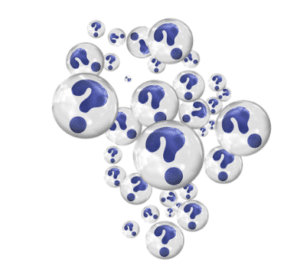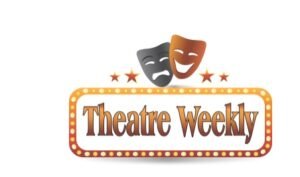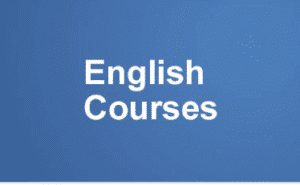how you can describe monuments:

When describing a monument, it’s important to consider its historical, cultural, and architectural significance. Here are two examples of how you can describe monuments:
- Taj Mahal, Agra, India: The Taj Mahal is an iconic monument located in Agra, India. It was built by Mughal Emperor Shah Jahan as a mausoleum for his beloved wife, Mumtaz Mahal. Completed in 1653, the Taj Mahal is considered a masterpiece of Mughal architecture and is recognized as a UNESCO World Heritage Site [1]. The monument is made of white marble and features intricate carvings, calligraphy, and delicate inlays of precious stones. Its symmetrical design, with a central dome and four minarets, creates a sense of harmony and elegance. The Taj Mahal is renowned for its beautiful gardens, reflecting pools, and the ethereal glow it takes on during sunrise and sunset. It is a symbol of love and a testament to the rich cultural heritage of India.
- Statue of Liberty, New York City, USA: The Statue of Liberty is an iconic monument located on Liberty Island in New York Harbor. It was a gift from the people of France to the United States and was dedicated in 1886. Designed by French sculptor Frédéric Auguste Bartholdi, the statue is a symbol of freedom and democracy. Standing at a height of 305 feet, it depicts a robed female figure holding a torch and a tablet inscribed with the date of the American Declaration of Independence [2]. The statue is made of copper and its verdigris patina gives it a distinctive green color. The Statue of Liberty has welcomed millions of immigrants to the United States, symbolizing hope, opportunity, and the ideals of liberty and justice. It is an enduring symbol of American values and serves as a prominent landmark in the New York City skyline.
These examples demonstrate how to describe monuments by highlighting their historical context, architectural features, cultural significance, and symbolic representations. Remember to provide relevant details to paint a vivid picture for the reader.




Learn How to describe a picture
When describing a picture, there are several tips you can follow to provide a comprehensive and engaging description. Here are some tips gathered from various sources:
-
Take a moment to observe: Before you start describing the picture, take a careful look at it and spend a few moments to understand its details and overall composition. This will help you provide an accurate description. (Source: [1])
-
Start with a general overview: Begin your description by giving a concise summary or general idea of what the picture is about. You can mention the main subjects, setting, or context of the picture. (Source: [3])
-
Use present continuous tense: When describing what is happening in the picture, utilize the present continuous tense to explain the actions taking place. For example, “The man is walking,” “The people are laughing,” or “It’s raining.” This helps bring the picture to life. (Source: [1])
-
Provide details: Describe the objects, people, and their positions in the picture. Use adjectives to convey specific characteristics or emotions. For instance, “In the picture, there is a colorful bouquet of flowers on the table,” or “The woman is sitting on the left side of the bench.” (Source: [3])
-
Mention your interpretation: Share your thoughts or assumptions about what might be happening in the picture based on the visual cues. However, make sure to clarify that it is your interpretation and not necessarily a fact. (Source: [1])
-
Organize your description: Maintain a logical structure in your description. Start with the context and setting, then proceed to discuss the positions of objects and characters, their actions, and any additional details that catch your attention. (Source: [3])
-
Use language prompts: Familiarize yourself with useful language prompts to describe different aspects of the picture. For example, use phrases such as “In the picture, I can see,” “There’s/There are,” or “There isn’t a/There aren’t any.” These prompts can help guide your description and make it more structured. (Source: [1])
-
Answer WH questions: Ask yourself a series of WH questions (What, Where, Who, etc.) related to the picture and answer them to form a coherent description. This approach helps create a narrative-like structure. (Source: [3])
Remember, practice is key to improving your descriptive skills. The more you describe pictures or images, the better you will become at capturing their essence and conveying the visual information to others.








google.com, pub-6657064514999455, DIRECT, f08c47fec0942fa0





Here are 20 words for emotions in English:
- Happiness
- Sadness
- Fear
- Anger
- Joy
- Love
- Excitement
- Surprise
- Disgust
- Guilt
- Shame
- Jealousy
- Envy
- Hope
- Contentment
- Boredom
- Anxiety
- Pride
- Relief
- Loneliness
These words represent a range of emotions and can be used to describe and express various feelings and states of being. It’s important to note that emotions are complex and nuanced, and these words provide a starting point for understanding and communicating different emotional experiences.
(Source: [3])

Useful prepositions of movement to improve English include:
- To: movement in the direction of something (e.g., “I walked to the park”).
- Across: movement from one side to the other side of something (e.g., “She swam across the river”).
- Around: movement passing something in a curved route (e.g., “We walked around the city”).
- Away from: indicating the point where a movement begins (e.g., “He ran away from the crowd”).
- Into: movement to an enclosed space (e.g., “They stepped into the house”).
- Off: movement away from something (e.g., “She jumped off the bike”).
- On/onto: movement to the top surface of something (e.g., “He climbed onto the roof”).
- Out of: indicating the enclosed space where a movement begins (e.g., “The cat jumped out of the box”).
- Over: movement above and across the top or top surface of something (e.g., “He leaped over the fence”).
- Past: movement from one side to the other side of something (e.g., “We walked past the store”).
These prepositions can be used to describe various movements and directions. Practicing their usage will help improve your English language skills.
(Source: [1])
To improve your travel vocabulary, here are some tips and suggestions:

- Read travel-related materials: Explore travel blogs, magazines, and books to familiarize yourself with travel vocabulary. Websites like Preply[1], English Digital Academy[2], and The Fluent Life[3] provide useful resources for learning travel-related words and phrases. You can also follow travel bloggers or watch travel shows to expose yourself to different travel-related terms.
- Listen to podcasts: Listening to podcasts focused on travel can help you improve your vocabulary and comprehension skills. Podcasts like “The Musafir Stories” mentioned in The Fluent Life[3] article provide engaging content about various travel destinations.
- Create a word list: As you come across new travel vocabulary, create a word list or flashcards to review regularly. Writing down the words and their meanings will reinforce your learning and make it easier to remember them.
- Practice using travel vocabulary: Actively use the travel vocabulary you learn in conversations or by writing about your travel experiences. You can write travel stories, engage in role plays, or have discussions with language exchange partners to practice using the words in context.
- Take language courses or lessons: Consider enrolling in language courses or taking online lessons specifically focused on travel English. These courses often provide structured learning materials and exercises to help you expand your travel vocabulary.
- Use travel apps and online resources: There are various language learning apps and websites that offer travel-themed lessons and exercises. Duolingo, Babbel, and Memrise are popular language learning apps that include travel-related topics.
Remember, the key to improving your travel vocabulary is consistent practice and exposure to relevant materials. By incorporating these tips into your language learning routine, you’ll gradually enhance your ability to communicate effectively in travel-related situations.
New Words to Learn Massive Studded Archaeological Tradition Sightseeing Ticket Accommodation Suitcase Fascinating Tourist Situated Retreat Breezy Steep Mountainous Departure Trek Wander Navigation Camps Bonfire Climb Pleasant Metro Night sky
References:
- Preply: Travel English Vocabulary, Phrases & Expressions for Traveling – Preply. 1
- English Digital Academy: Boost your English with Advanced Travel Vocabulary. 2
- The Fluent Life: Tips to Improve Travel English Vocabulary Words: Here’s Your Guide to … 3
To learn marketing vocabulary, you can follow these tips:

- Utilize comprehensive marketing glossaries: Explore resources like the HubSpot Blog’s “The Ultimate Dictionary of Marketing Terms You Should Know” which provides a list of the top 100 marketing terms along with definitions and additional resources for deeper learning [1].
- Study marketing-related articles and blog posts: Read articles and blog posts from reputable marketing websites that cover different aspects of marketing. Websites like HubSpot, WordStream, and GlobalExam offer valuable insights and vocabulary lists to enhance your marketing knowledge [1][2][3].
- Take online courses or tutorials: Many online platforms offer courses and tutorials specifically designed to teach marketing vocabulary. Websites like Coursera, Udemy, and LinkedIn Learning provide a wide range of marketing courses that cover essential terms and concepts.
- Engage with marketing communities and forums: Join online communities or forums where marketers gather to discuss industry trends and terminologies. Participating in these communities can expose you to new vocabulary and provide opportunities for discussion and clarification.
- Read marketing books: Explore marketing books written by industry experts. Books such as “Influence: The Psychology of Persuasion” by Robert Cialdini, “Contagious: How to Build Word of Mouth in the Digital Age” by Jonah Berger, and “Made to Stick: Why Some Ideas Survive and Others Die” by Chip Heath and Dan Heath can expand your marketing vocabulary and deepen your understanding of marketing principles.
- Create flashcards or use vocabulary apps: Create flashcards or use vocabulary apps like Quizlet or Memrise to practice and memorize marketing terms. Regular review and repetition will help reinforce your understanding and retention of the vocabulary.
- Apply the vocabulary in real-life scenarios: To truly grasp marketing vocabulary, apply it to real-life marketing situations. Practice writing marketing copy, analyzing marketing campaigns, or creating marketing strategies using the newly learned terms.
Remember, consistent practice and exposure to marketing terminology will help you internalize the vocabulary and become more fluent in marketing discussions.
References: [1] The Ultimate Dictionary of Marketing Terms You Should Know – HubSpot Blog. Retrieved from [1] [2] 120 of the Best Words and Phrases for Marketing with Emotion – WordStream. Retrieved from [2] [3] Marketing Vocabulary: List Of Essential Words And Terms – GlobalExam. Retrieved from [3]
Sure! Here are some marketing expressions in English:

- Target audience: The specific group of people who are the focus of a marketing campaign or message.[1]
- Unique selling proposition (USP): A distinctive feature or benefit of a product or service that sets it apart from competitors.[1]
- Call to action (CTA): A statement or instruction that encourages the reader or viewer to take a specific action, such as “Buy now” or “Subscribe today.”[1]
- Brand awareness: The level of familiarity and recognition that consumers have with a particular brand.[1]
- Market research: The process of gathering information about the target market, including consumer preferences, trends, and competition, to make informed business decisions.[1]
- ROI (Return on Investment): A measure of the profitability of an investment or marketing campaign, calculated by dividing the net profit by the cost of the investment and expressing it as a percentage.[1]
- Branding: The process of creating a unique and recognizable image or identity for a product, company, or organization.[1]
- Market segmentation: Dividing a market into distinct groups of consumers with similar characteristics and needs for targeted marketing strategies.[1]
- Lead generation: The process of attracting and capturing potential customers or leads for a business.[1]
- Content marketing: The creation and distribution of valuable and relevant content to attract and engage a target audience.[1]
These are just a few examples, and there are many more marketing expressions used in the industry. I hope this helps!
To learn anthropology vocabulary, here are some tips along with examples:

- Create Flashcards: Flashcards are a great way to learn and memorize new vocabulary. Write the anthropology term on one side and its definition on the other side of the flashcard. For example:
- Term: Enculturation Definition: The adoption of the behavior patterns of the surrounding culture.
- Use Contextual Learning: Read anthropology textbooks, articles, or academic papers to encounter new vocabulary in context. Highlight or make note of unfamiliar words and look up their meanings. For example, if you come across the term “ethnocentrism,” which refers to the belief in the superiority of one’s own ethnic group, you can create a sentence like:
- “Ethnocentrism can hinder cross-cultural understanding and acceptance.”
- Practice Word Association: Associate new anthropology terms with familiar words or concepts to enhance understanding and retention. For example:
- Term: Cultural Patterns Association: Cultural patterns are like the “rules of membership” that guide behavior within a society.
- Utilize Online Resources: Visit websites that provide anthropology vocabulary lists and learning activities. One such resource is Vocabulary.com, which offers flashcards and other learning exercises [1].
- Engage in Active Learning: Engage in discussions, join study groups, or participate in online forums related to anthropology. Actively using and discussing the vocabulary will reinforce your understanding and help you remember the terms.
Remember to practice regularly and review the vocabulary periodically to reinforce your learning. Good luck with your anthropology vocabulary studies!
Here are some anthropology vocabulary expressions from the provided sources:

- Applied Anthropology: The use of anthropological expertise on a practical level to understand and alleviate human problems in areas such as agriculture, literacy, etc. [1]
- Culture: In social anthropology, culture refers to the sum total of a group’s beliefs, customs, knowledge, and technology. It is learned and constitutes a dynamic system that exists outside the body and is not inherited through biology. [1]
- Cultural Anthropology: A style of anthropology that emphasizes the shared meanings within a community, allowing its members to understand each other and cooperate successfully. It is associated more with North American scholarship. [1]
- Ethnocentric: Describes the condition of viewing and judging other cultures and societies according to the assumptions of one’s own society. Anthropology aims to highlight our assumptions and show that other cultures are different but not inherently worse or better. [1]
- Ethnography: The recording and analysis of a culture or society, often based on participant-observation and resulting in a written account of a people, place, or institution. [1]
- Evolutionary: This term can refer to the outdated notion of social and cultural organizations progressing from simple to complex stages. It can also refer to the concept of genetic adaptation in human populations and other living creatures through random mutation and natural selection. [1]
- Functionalism: The anthropological perspective that focuses on understanding societies as functional and viable in the present, rather than explaining them solely based on their past. [1]
- Social Contract Theory: A political and moral theory that suggests individuals surrender some individual freedoms in exchange for protection and security provided by the government. [2]
- Neocolonialism: An indirect form of imperialism and a new phase of Western capitalist expansionism. It involves maintaining control and influence over other countries or territories through economic, cultural, or political means. [2]
- Neoliberalism: An economic and political ideology that emphasizes individual freedoms, free markets, deregulated economies, and global economic integration. [2]
These are just a few examples of anthropology vocabulary expressions. If you have any specific terms or topics you would like to explore further, please let me know.
Learning chemistry vocabulary can be challenging, but with the right approach, it can become easier and more enjoyable. Here are some tips to learn chemistry vocabulary along with examples:

- Understand the Definitions: Start by familiarizing yourself with the definitions of chemistry terms. Websites like ThoughtCo provide comprehensive lists of important chemistry vocabulary terms and their definitions [1]. For example, understanding the definition of “accuracy” as a measure of how close a measured value is to its true value can help you grasp its meaning in various contexts.
- Create Flashcards: Flashcards are an effective tool for memorizing vocabulary. You can create flashcards using the definitions of chemistry terms and their corresponding examples. For instance, you can create a flashcard for “acid” and include the definition that acids give off protons or H+ in water, along with an example like hydrochloric acid (HCl).
- Use Mnemonics: Mnemonics can aid in remembering complex terms or concepts. Create memorable phrases or sentences that incorporate the vocabulary words. For example, to remember the alkali metals (e.g., lithium, sodium, potassium), you can use the mnemonic “LiNa Kicks the Ball.”
- Apply the Terms in Context: Apply the vocabulary terms in practice by solving chemistry problems or conducting experiments. This practical application helps reinforce your understanding and retention of the terms. For example, when studying reactions, use terms like “addition reaction” to describe a chemical reaction where atoms add to a carbon-carbon multiple bond.
- Engage in Active Learning: Actively engage with the vocabulary by using it in conversations, discussions, or writing. Discuss chemistry concepts with peers or write explanations using the vocabulary terms. This active learning approach promotes deeper understanding and retention.
- Use Online Resources: Online platforms like Khan Academy offer extensive resources for learning chemistry [2]. Utilize interactive lessons, videos, and quizzes to enhance your understanding of chemistry vocabulary in a structured manner.
- Review and Practice Regularly: Consistent review and practice are key to mastering chemistry vocabulary. Set aside regular study sessions where you review flashcards, solve problems, and reinforce your knowledge of the terms.
Remember, learning chemistry vocabulary is an ongoing process. Patience, persistence, and active engagement are crucial for success. By applying these tips and incorporating relevant examples, you can enhance your understanding and retention of chemistry vocabulary.
References: [1] Chemistry Vocabulary – Definitions of Chemistry Terms – ThoughtCo. Retrieved from [1] [2] Chemistry library | Science | Khan Academy. Retrieved from [2]
chemistry Expressions You Should Know:

- Equilibrium Constant Expression: The equilibrium constant expression relates the concentrations of reactants and products in a chemical reaction at equilibrium. It is represented by the equation K = [products]/[reactants], where [products] and [reactants] are the concentrations of the products and reactants, respectively. The equilibrium constant (K) is a constant value at a given temperature and indicates the extent of the reaction at equilibrium. It is determined by the ratio of the rate constants for the forward and reverse reactions. The equilibrium constant expression can be written in terms of concentrations (Kc) or partial pressures (Kp) depending on the nature of the reaction. [1]
- Equilibrium Quotient (Q): The equilibrium quotient (Q) is similar to the equilibrium constant expression but is calculated using any arbitrary set of concentrations or partial pressures of reactants and products, not necessarily at equilibrium. The expression for Q is the same as that for the equilibrium constant (K), i.e., Q = [products]/[reactants]. However, unlike K, Q can have different values depending on the initial conditions of the reaction. When the reaction is at equilibrium, Q is equal to K. [2]
- Molarity: Molarity is a way to express the concentration of a solution. It is defined as the number of moles of solute dissolved in one liter of solution. The formula for molarity (M) is given by M = moles of solute/volume of solution in liters. Molarity is commonly used in reactions that occur in solution. [3]
- Mole Fraction: Mole fraction is another way to express the concentration of a component in a solution. It is defined as the ratio of the number of moles of a component to the total number of moles of all components in the solution. The formula for mole fraction (χ) of a component is given by χ = moles of component/total moles of all components. Mole fraction is often used to describe gas concentrations and determine the vapor pressures of liquid mixtures. [3]
These expressions are fundamental concepts in chemistry and are widely used in various calculations and discussions related to chemical equilibrium and solution concentrations.